The Accordion and Gershwin’s Rhapsody In Blue: A Historical Perspective
Henry Doktorski
Published in Music Theory: Explorations and Applications, Volume VII (Mary Pappert School of Music, Duquesne University: 1999)
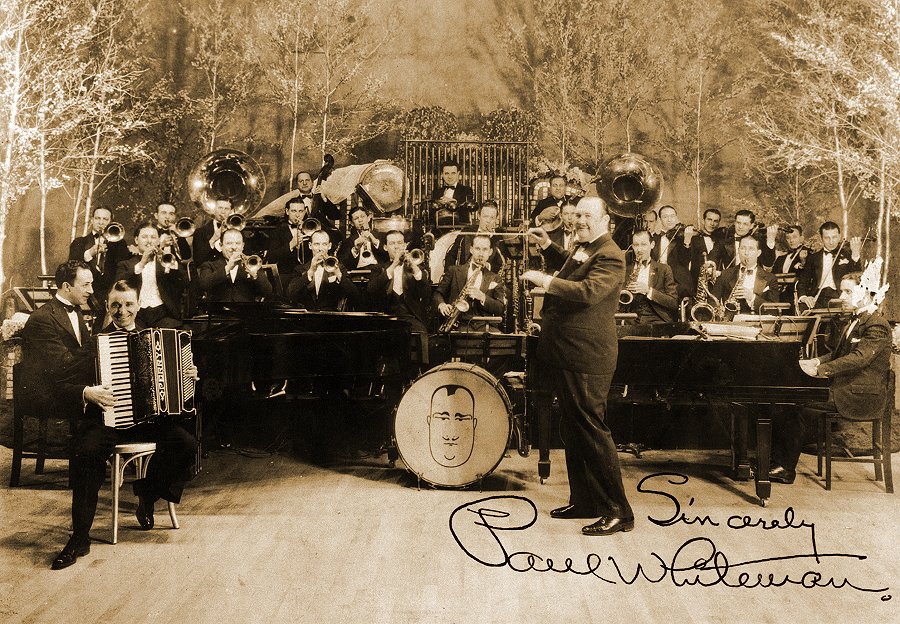
Figure 1: Mario Perry and the Paul Whiteman Orchestra.
George Gershwin (1898-1937), the son of Russian-Jewish immigrants, was born in Brooklyn, New York. He grew up with a keen sense of the “street.” According to the rules of the street, music was for “sissies,” and it wasn’t until he was ten years old that George heard the strains of a violin emanating from an apartment window in his neighborhood. “It was, to me, a flashing revelation of beauty,” Gershwin said years later, and the revelation indeed changed his life. He began playing the piano, which led to piano lessons, which led to his parents buying a piano for their apartment, which led, in 1914, to George’s decision to quit high school, over his mother’s furious objections, and work full time for Tin Pan Alley writing popular songs. His particular genius lay in his ability to break the conventional rules of both concert music and popular music, and he quickly became known for his rapid chord changes and unorthodox rhythmic patterns.
One night, while improvising on a piano at a party—something he did at almost every party he ever gave or attended—he began formulating the sinuous, intoxicating melody that would become the inspired core of Rhapsody in Blue. “There had been so much chatter about the limitations of jazz,” Gershwin wrote about Rhapsody in Blue, “not to speak of the manifest misunderstandings of its function. Jazz, they said, had to be in strict time. It had to cling to dance rhythms. I resolved, if possible, to kill that misconception with one sturdy blow.”
Rhapsody in Blue had its debut in New York on February 12, 1924 (featuring the Paul Whiteman Orchestra with Gershwin himself at the piano), in an event that was later dubbed “the emancipation proclamation of jazz.” When it was over, the auditorium erupted in applause. Rhapsody in Blue came to represent the unmistakably optimistic, impulsive, and brazen sounds of America in the 1920s. Gershwin recorded the Rhapsody with the Paul Whiteman Orchestra for RCA Victor in 1924, and listeners across North America and beyond embraced Rhapsody in Blue as the quintessential sound of an era. (Endnote 1)
Not only was the music of George Gershwin popular among pianists, it was also popular among other instrumentalists; his music was transcribed for organ, woodwind, brass and string instruments, as well as accordion.
And why not the accordion? During the first half of the twentieth-century, the instrument experienced a “golden age,” a boom time of amazing popularity, as scholars of American music can attest. Between 1900 and 1950:
• accordion studios mushroomed across the country
• radio stations broadcast regularly scheduled shows featuring prominent accordion performers (Endnote 2)
• major record labels released recordings featuring accordionists (Endnote 3)
• orchestras such as the Paul Whiteman Orchestra employed staff accordionists and also featured accordionists as soloists
• accordion recitals were heard at prestigious concert halls such as New York City’s Carnegie Hall, Chicago’s Civic Opera House, and Los Angeles’ Philharmonic Auditorium
One of the accordion’s greatest exponents during the mid-twentieth century was Dick Contino (b. 1930 in Fresno, California), who literally catapulted the instrument into the public eye. His sudden rise to fame as a teenage accordion idol from 1948 to 1951 was nothing less than phenomenal. He performed concerts with the Horace Heidt Orchestra from New York to Hollywood and appeared 48 times on the Ed Sullivan television show. Wherever he played, lines formed at the box office, lines filled with teenage bobbysoxer girls who turned out in numbers that hadn’t been seen since the heyday of a skinny young crooner named Frank Sinatra. When he performed at the Hollywood Bowl, twenty thousand fans packed the stadium. Five hundred Dick Contino fan clubs were formed throughout the United States. (Endnote 4)
In much of the above-mentioned accordion-related activities, the music of George Gershwin—especially his Rhapsody in Blue—was featured. The editor of Accordion World magazine expressed his admiration for the composer of Rhapsody in Blue in an obituary he wrote for George Gershwin, published in the August 1937 issue, “All accordionists mourn Gershwin’s death. His Rhapsody in Blue is the American accordion classic. This lofty gem, not yet released by any music publisher, for the accordion, nevertheless, is played self-arranged by our name accordionists.” (Endnote 5)
The legendary American concert accordionist, Anthony Galla-Rini (b. 1904) confirmed this, “The Rhapsody was (and still is) extremely popular among accordionists; I began playing it myself soon after the first piano and orchestral reduction score was published." ” (Endnote 6)
The Rhapsody was performed in dozens of recitals by other virtuoso accordionists. Accordion World magazine listed performances by artists such as:
• Anthony Galla-Rini (October 1936), (Endnote 7)
• Frank Gaviani (Zordon Hall in Boston, October 1936), (Endnote 8)
• Andy Arcari (Musician’s Hall in Philadelphia, April 1937 and Rivoli Theater in Toledo, OH, April 1938), (Endnote 9) and
• Rosamund (Carpathia Park in Detroit, June 1938). (Endnote 10)
• Domenic and Anthony Mecca played their own duet version of the Rhapsody at the historic Charles Magnante Accordion Recital held at New York City’s Carnegie Hall on April 18th, 1939. (Endnote 11)
• Mort Herold (b. 1926) played the entire Rhapsody in recital at the Chicago Civic Operal House on November 15, 1947 to an audience of 3,500. Accordion World Magazine called the concert, “one of the year’s outstanding accordion events.” (Endnote 12)
The music of Gershwin has not lost its popularity with accordionists with
the passage of time. Although today the instrument is not heard in recital
as frequently as it was in the past, the author recently had the pleasure
of attending a young people’s concert in 1996 at the Kennedy Center
Terrace Theater—featuring accordionist Carmelo Pino with the Washington
Chamber Symphony (conducted by music director Stephen Simon)—which
included a medley of Gershwin tunes (including portions of the
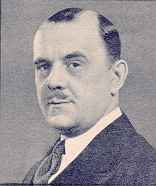
Figure 2: Basil Fomeen
Accordionists also recorded the Rhapsody, beginning with the duo of
Basil Fomeen and Nick Hope on the Victor Record Company label in 1928.
(Endnote 14) (The only other recording of the
Basil Fomeen was a Russian-born American orchestra leader, accordionist, composer, and director of the Basil Fomeen Orchestra. Elena Bradunas wrote about Fomeen in Folklife Center News, a publication of the American Folklife Center in the Library of Congress at Washington D.C.
“Basil Fomeen (1902-1983) . . . played hotels and clubs in New York City and on the eastern seaboard. Born in 1902 in Kharkoff, Russia, he trained in the country’s cadet corps and studied music. He came to America in 1922, settling in New York City. In 1924 Fomeen organized his International Orchestra, which presented a wide repertoire of American dance music, Viennese waltzes, boleros, guarachas, rumbas, sambas, choros, paso-dobles, tangos, and songs of different nationalities put into dance tempo.
“From 1943 to 1944 Fomeen went overseas with U.S.O. unity 99 and performed in Africa, Europe, and the Far East. He recorded six discs for RCA Victor as an accordion soloist, including excerpts from Rhapsody in Blue which he arranged for the accordion. His orchestra recorded on the Standard, Seva, National, and Decca labels. Fomeen’s original compositions include his theme song ‘Manhattan Gypsy’ published in 1940, thirty-six songs called Russian-Gypsy love ballads included on his five recorded albums ‘Songs of Inspiration,’ made in 1939, and a few sambas-choros published in Rio de Janeiro in 1941.
“He was also the designer and builder of a unique keyboard instrument called the ‘basiphon,’ which consisted of a piano, harmonium, vibraphone, chimes, and cimbalom rolled into one.” (Endnote 16)
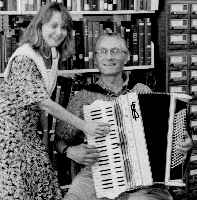
Figure 3: Fomeen’s accordion
Fomeen’s duet partner on the Rhapsody recording was Nick Hope, a popular accordionist who wrote a regular column in the short-lived Accordion News magazine, published from 1935 to 1936.
Most accordion performances of the Rhapsody (including the recording by Fomeen and Hope) were abridged solo arrangements—only the most popular sections were included—but a few accordionists actually played the complete work with orchestra. Edwin Davison wrote in The Golden Age of the Accordion, “In 1939 Arthur Metzler [b. 1915] appeared in concert at Kimball Hall [in Chicago] where he played the complete 31 pages of George Gershwin’s Rhapsody in Blue with a symphony orchestra under the direction of his teacher Andy Rizzo. The performance was a tremendous success.” (Endnote 17)
Perhaps one of the greatest accordionist to perform the complete Rhapsody with orchestra was Cornell Smelser. Lester Sims wrote in the February 1938 issue of Accordion World, “I met Cornell Smelser (a truly great genius) many times, and heard him play. He once played Gershwin’s ‘Rhapsody in Blue’ in its entirety [italics by Sims] on the accordion; something I doubt any living accordionist has ever attempted.” (Endnote 18)
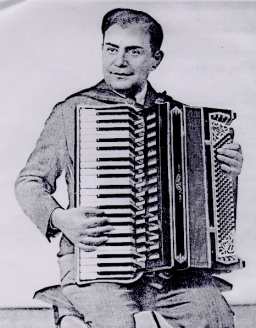
Figure 4: Cornell Smelser
C. Hilding Berquist expressed his appreciation of Smelser in the July 1947 issue of Accordion World, “Probably the first time in radio history of an accordionist’s appearance with an outstanding orchestra occurred on the evening of April 20, 1931 (16 years ago) when Cornell Smelser played the Rhapsody in Blue by George Gershwin in its entirety on the Gold Medal Fast Freight Program over WJZ and the NBC national network, accompanied by the Ohman-Arden Orchestra of some 40 musicians. Of special note was the fact that Cornell was the only accordionist given permission by Gershwin himself to play it over the ether. Also, the only other musicians permitted to broadcast it at that time was Paul Whiteman’s Orchestra and the organist Jesse Crawford, with Gershwin himself at the piano.” (Endnote 19)
Berquist wrote later in the July 1950 issue of Accordion World, “Cornell Smelser was born on August 7th, 1902, in Budapest, Hungary. Piano was his original instrument and he received his musical education at the Conservatory of Music in Budapest. . . He came to New York in 1920. First appearing as an accordionist on the jazz scene somewhere in the late 1920s, he blazed across the jazz firmament like a meteor, only to vanish—in mid-1931—as quickly as he had first appeared. . . This is because . . . illness, tuberculosis, . . . prevented continuance of his career.” (Endnote 20)
Today, a century after the birth of George Gershwin, a small but dedicated contigency of accordionists still carry on the tradition of Cornell Smelser and his colleagues. During the last decade, no less than three accordionists (and one accordion orchestra—the UMKC Accordion Orchestra) have made recordings of Gershwin’s Rhapsody. (See the discography below.)
Of special note are two exceptional recordings: a 1992 release featuring Anthony Galla-Rini—who began his musical career in 1911 and is still performing and teaching today (1999) at the age of 95—and a 1998 release featuring the author with The Duquesne Chamber Players: the first recording ever made of the unabridged Rhapsody with accordion and orchestra. (See Gershwin’s Rhapsody in Blue by Henry Doktorski with the Duquesne University Chamber Players.)
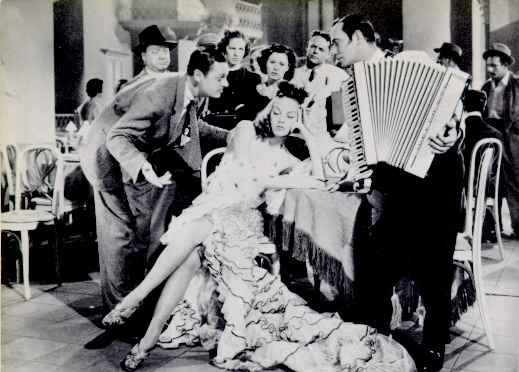
Figure 5: Jerome Cowan, Vera Zorina, and Phil Baker in a scene from the 1938 film The Goldwyn Follies, with music by George Gershwin.
Endnotes
1. The first three paragraphs of this essay were adapted from a text by Jerome Stern from the Laserlight (1995) CD booklet notes of “Gershwin Plays Gershwin.”
2. Charles Magnante (1905-1986) was one of America's greatest accordionists who regularly performed on radio on programs such as “Major Bowes Family Hour,” “Manhattan Merry-Go-Round,” and “The Roxy Gang” (broadcast every Sunday over WJZ in New York City).
3. Probably the first accordionist to make a commerical recording was John Kimmel who recorded American Cake Walk on Edison 9341 (a two-minute wax cylinder) in September 1906.
4. Bob Bove, Accordion Man: The Legendary Dick Contino (Tallahassee, Florida: Father & Son Publishing, Inc., 1994), 33.
5. Accordion World, May 1936.
6. Anthony Galla-Rini, from a phone conversation with the author (June 21, 1998)
7. Accordion World, October 1936, p. 4.
8. Accordion World, October 1936, p. 17.
9. Accordion World, May-June 1937, p. 13.
10. Accordion World, August 1938, p. 14.
11. At the Carnegie Hall concert, the Magnante Quartet (Joe Biviano, Abe Goldman, Gene Von Hallberg and Charles Magnante) also performed four other pieces by Gershwin: Somebody Loves Me, Mexican Dance, Summertime and I Got Rhythm.
12. Accordion World, November 1948, 9.
13. The popularity of Gershwin’s music is not limited to United States accordionists. The Viennese Accordion Chamber Ensemble includes Gershwin’s works in its repertoire, as does New Zealander concert accordionist Tatiana Lanchtchikova.
14. The editors of Accordion World (New York: May 1936), p. 21, wrote: “The Victor Record Company some time ago released a recording of Gershwin’s Rhapsody in Blue played by Basil Fomeen and Nick Hope. It is well worth having.” It is curious that the record label (and the 1930 Victor catalog which I examined) makes no mention of Nick Hope. Instead, the performers are simply titled “The Fomeen Bros.” The flip side of the record contains “Oriental One-Step (Accordion with Novelty Trio)” by the Fomeen Trio.
15. In the 1930 Victor Record Catalog, only two versions of Rhapsody In Blue are listed, one two-record set by The Whiteman Concert Orchestra (price $1.25) and the other by the Fomeen Bros. (price $.75).
I listened to a test-pressing of the 78 rpm recording (titled Excerpt from Rhapsody In Blue by the Fomeen Brothers) at the Library of Congress. The total time is 4:35. To be frank, I was disappointed in this recording for three reasons:
A. The accordions were not in good tune, but that was not unusual back in the 1920s.
B. There are several wrong note blunders and occasionally long notes are broken by sloppy bellows changes. Of course, once the recording process was started, the performers had to finish all the way to the end, as editing was impossible on the wax disks.
C. The tempo is at break-neck speed; there is no subtlety here. Perhaps the performers had to play quickly so as to fit the music in the allotted time.
Apparently the Fomeen Brothers’ recording of Gershwin’s Rhapsody was not a terribly big hit, as it was replaced in the 1933 Victor catalog by a version by the organist Jesse Crawford.
16. Elena Bradunas, “The Basil Fomeen Collection,” Folklife Center News (Washington D.C.: Library of Congress, July-September 1983 - Vol. VI, No. 3), 7.
George Kipper, accordion historian and sound archivist at the Library of Congress, told me: “Basil Fomeen was apparently a popular orchestra leader in New York of the 1950s. I remember watching an episode of the popular TV program ‘The Honeymooners’ starring Jackie Gleason and Art Carney. During the show, Ralph Kramden tells Ed Norton, ‘I just got paid, let’s go out on the town with the girls!’ Norton enthusiastically replies, ‘Yeah, let’s go see Basil Fomeen!’” George Kipper, from a phone conversation with the author on August 27, 1998.
However, because Jackie Gleason had his own orchestra in the 1950s (The Jackie Gleason Orchestra), I think this comment was a joke at Fomeen’s expense, as Basil was known best for his ethnic music.
I had the pleasure of playing Fomeen’s accordion, which is part of the Basil Fomeen Collection at the American Folklife Center of the Library of Congress (courtesy of Jennifer A. Cutting, folklife specialist at the LOC and accordionist as well). The brand name is listed as “Galizi” and the instrument seems to be custom made with an extended keyboard from low F to high C. There are three sets of reeds: one low and two middles.
But the most unusual feature of this accordion is that there are two keyboards (of the same range) on the right-hand manual, like a two-manual organ. The first keyboard sounds the violin and master stops (there is a lever on the grill to select the reeds), and the second keyboard, located between the main keyboard and the grill (the keys are half-length), sounds the bassoon reeds.
17. Flynn, Davison & Chavez, The Golden Age of the Accordion (Schertz, Texas: Flynn Associates Publishing Company, 1992), p. 243.
18. Accordion World, February 1938, p. 11.
19. Accordion World, July 1947,
20. Accordion World, August 1950, 10.
Photograph Credits
Figure 1. Accordionist Mario Perry as soloist with the Paul Whiteman Orchestra (undated photo from The Whiteman Archives, Stetson Hall, Williams College, Williamstown, Massachusetts, 01267). Perry was actually one of the violinists in the orchestra, but he frequently doubled on accordion. Out of 36 sound recording entries in the Library of Congress catalog, he is credited as playing violin AND accordion in 25 entries. He played violin only in the other 11 recordings. Although Perry was one of the violinists in the Paul Whiteman Orchestra, he frequently doubled on accordion. He was born by Italian parents on June 19, 1900. He also played in “Palace Trio.” He made several record for varous companies such as Victor, Brunswick, Pathé and other companies. Unfortunately he died in a car accident in 1929.
Figure 2. Basil Fomeen, ca. 1940, from the cover of the sheet music from his theme song, Manhattan Gypsy, as reprinted in Folklife Center News, (Washington D.C.: Library of Congress, July-September 1983 - Vol. VI, No. 3), 7.
Figure 3. Jennifer A. Cutting, folk life specialist at the Library of Congress in Washington D.C. and the author playing Fomeen's double-keyboard accordion. (August 1998)
Figure 4. Cornell Smelser, ca. 1931 (from Accordion World, August, 1938, p. 15.)
Figure 5. Jerome Cowan, Vera Zorina, and Phil Baker in a scene from the 1938 film "The Goldwyn Follies," with music by George Gershwin. (Culver Service Photo from "The Gershwin Years" by Edward Jablonski and Lawrence D. Stewart. Doubleday and Company, Inc. New York, 1973. p. 294.)
Discography of accordionists who recorded George Gershwin’s Rhapsody In Blue
Performer(s): Fomeen Bros. (Basil Fomeen and Nick Hope)
Album Title: Excerpts from Rhapsody In Blue
Description: 1 sound disc : analog, 78 rpm, mono.
Published: Victor Record Co., [1928]
Gershwin Title(s): Excerpts from Rhapsody In Blue
Performer(s): Destifany brothers (England)
Album Title: ?
Description: 1 sound disc : analog, 78 rpm, mono.
Published: Columbia 1680
Gershwin Title(s): Excerpts from Rhapsody In Blue
Performer(s): Olle Johnny (Sweden)
Album Title: ?
Description: 1 sound disc: analog, 78 rpm, mono.
Published: Scala 55, [1937]
Gershwin Title(s): Från Rhapsody In Blue Till Tiger Rag (medley)
Performer(s): Anthony Galla-Rini
Album Title: Rhapsody In Blue
Description: 1 sound disc: analog, 78 rpm, mono.
Published: Septim Records, [1950]
Gershwin Title(s): Excerpts from Rhapsody In Blue
Performer(s): Enzo & Lou Toppano (Australia)
Album Title: ?
Description: 1 sound disc: analog, 78 rpm, mono.
Published: Regal Zonophone G 24921
Gershwin Title(s): Excerpts from Rhapsody In Blue
Performer(s): Charles Magnante
Album Title: Magnante In Concert
Description: LP
Published: ?
Gershwin Title(s): Excerpts from Rhapsody In Blue
Performer(s): John Molinari
Album Title: ?
Description: 1 sound disc: analog, 78 rpm, mono.
Published: Accordia, [1957]
Gershwin Title(s): Excerpts from Rhapsody In Blue
(Side B is Bach - Gavotte)
Performer(s): John Molinari
Album Title: Accordion Solos, Vol. 3
Description: 10" LP
Published: FBC-10-123
Gershwin Title(s): Excerpts from Rhapsody In Blue
This is a re-release of the previous recording
Performer(s): John Molinari
Album Title: Accordion Solos
Description: 12" LP
Published: ALP-116 [1978]
Gershwin Title(s): Excerpts from Rhapsody In Blue
(This is a new recording; not the same recording as the previous entry)
Performer(s): William Cosby
Album Title: Celebrations
Description: 1 cassette
Published: No label or number on cassette, [1978]
Gershwin Title(s): Rhapsody In Blue
Performer(s): Anthony Galla-Rini
Album Title: Anthony Galla-Rini: Collector's Edition
Description: 1 cassette
Published: Seattle, Washington. : Petosa Accordions, [1992]
Gershwin Title(s): Rhapsody In Blue (Excerpts)
Performer(s): William Schimmel
Album Title: Dead End Ave.
Description: 1 compact disc
Published: Providence, Rhode Island. : Newport Classics, [1995]
Gershwin Title(s): Rhapsody In Blue(s) [Excerpts]
Performer(s): UMKC Accordion Orchestra, Joan Cochran-Sommers, director
Album Title: UMKC Accordion Orchestra
Description: 1 cassette tape
Published: ?
Gershwin Title(s): Medley
Performer(s): Doktorski, Henry and The Duquesne Chamber Players
Album Title: A Ragtime Rendition of Gershwin's Rhapsody In Blue
Description: 1 compact disc
Published: Pittsburgh, PA. : Alanna Records, [1998]
Gershwin Title(s): Rhapsody In Blue (complete unabridged)
| Back to Gershwin’s Rhapsody in Blue CD |
| Back to The Homepage of Henry Doktorski |